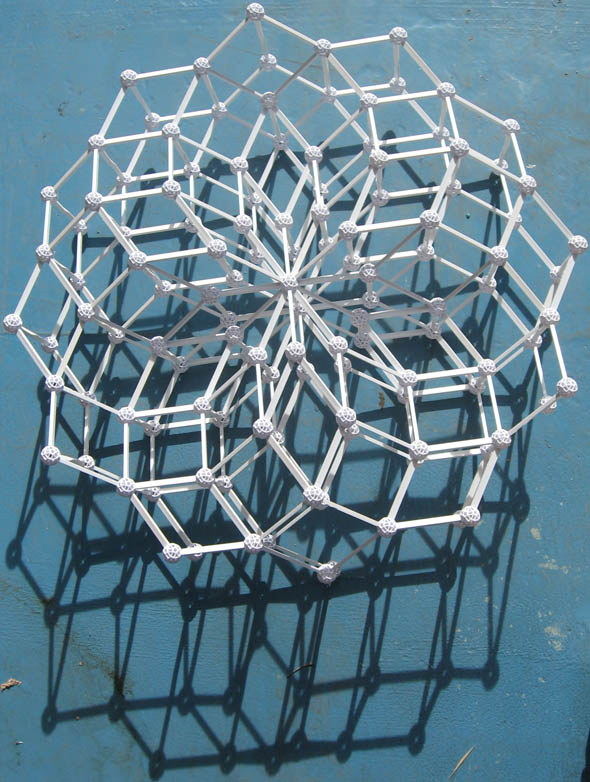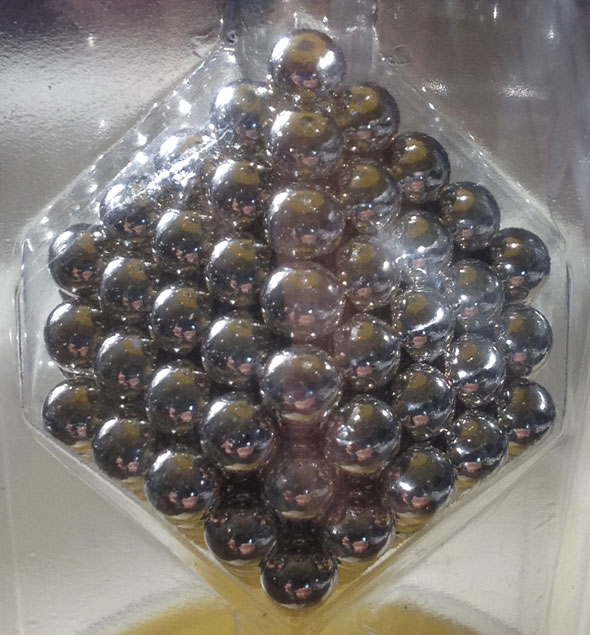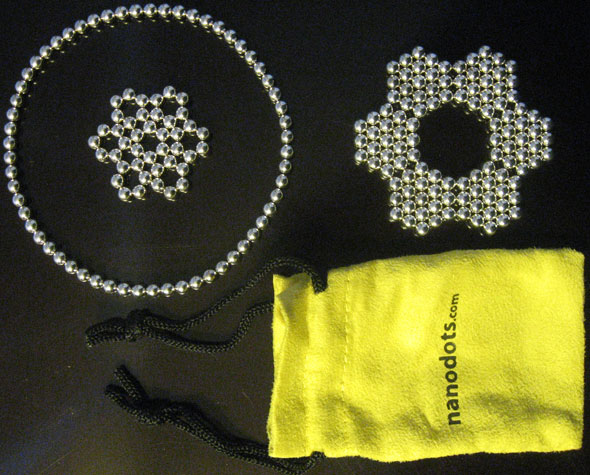I recently had an email inquiry (and then a follow-up technique) from a reader of Sacred Geometry Design Sourcebook about how to replicate the “Flower of Life – with Second Harmonic overlay” illustration on page 87 using classic straightedge and compass techniques. Here is her illustration, with comments. The basic technique is to subdivide the underlying hexagonal/equilateral triangle grid by the number of the harmonic desired. Thanks to SEEW from Maryland for the contribution!










 Zometool
Zometool





